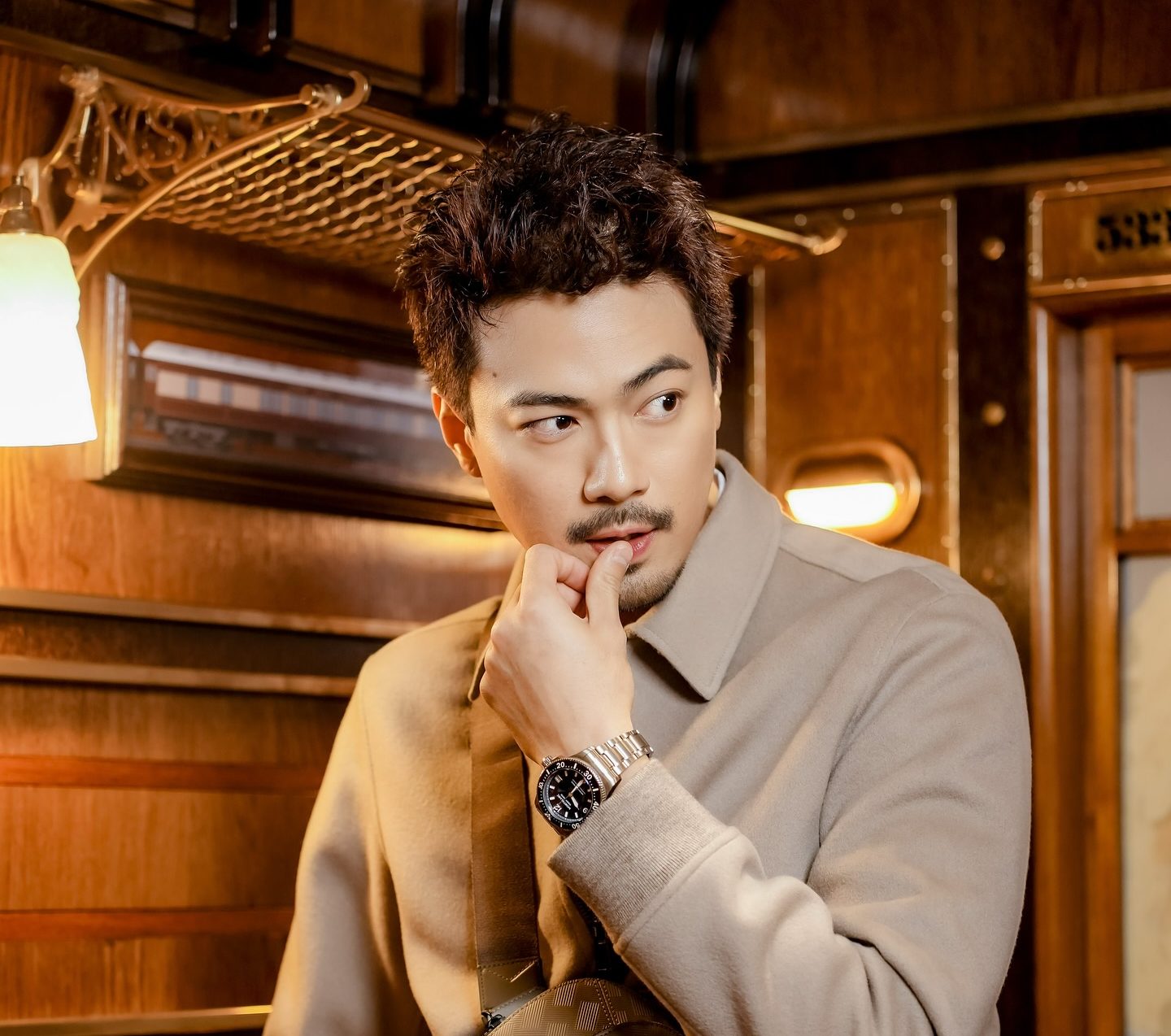Perched high on a mountaintop overlooking the Buddha Dordenma and the Bhutanese capital, Six Senses Thimphu is a place where time stands still and worries float away. Zaneta Cheng checks in and discovers serenity in its truest sense
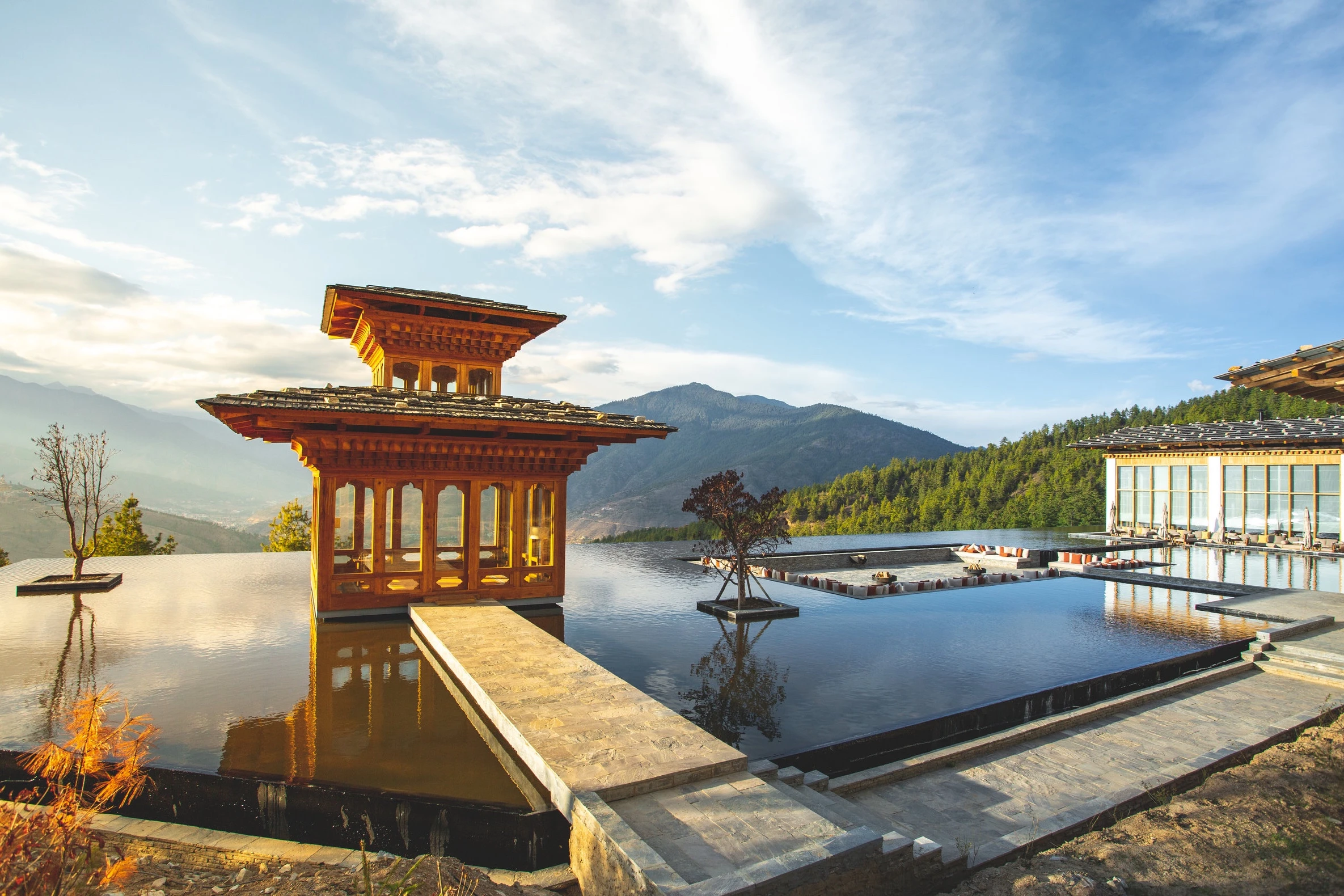
To walk into Six Senses Thimphu is a transcendental experience. There is a moment, just after the heavy wooden double doors open, when the world seems to pause. The foyer, made narrow with two fireplaces on either side, divides the check-in desk from the entryway and sitting area and opens to an expanse of unending sky. The staff call the Thimphu property, one of five lodges Six Senses has built in Bhutan, “the palace in the sky”. It sits on the mountaintop overlooking the Buddha Dordenma, the golden figure catching the light while Thimphu and its 100,000 residents sit almost a thousand feet below amidst a patchwork of green and yellow.
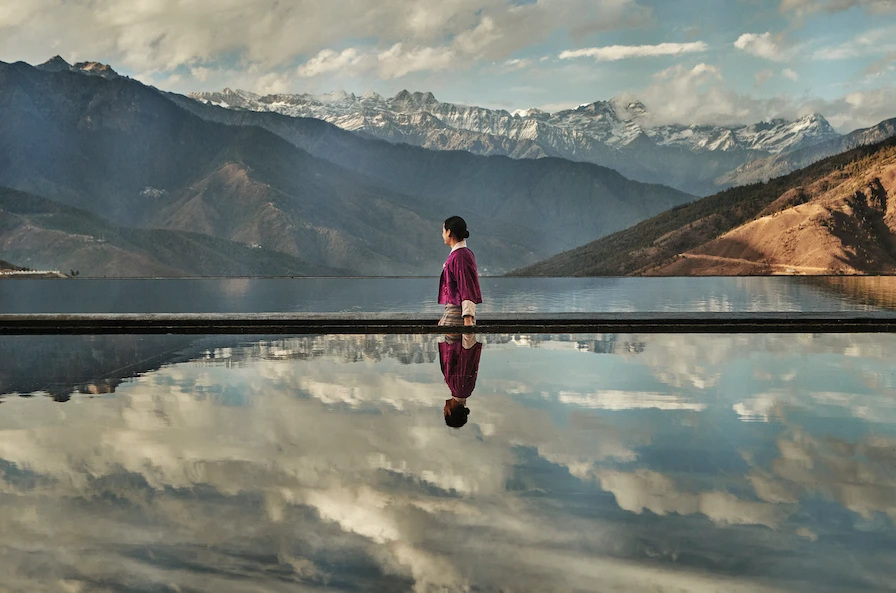
We walk under the mandala of the medicine Buddha carved on the ceiling of the entrance, into the foyer and head to Namkha, the hotel restaurant, for lunch. It’s to the right of the foyer and sits perched on a hillside, with floor-to-ceiling windows framing the view. Getting to Thimphu from Paro airport takes around an hour and a half and by the time we arrive it’s late lunchtime. The menu at Six Senses is a blend of Western and local flavours. A consommé that’s been made purely with mushrooms foraged in the surrounding hills is served on hefty wooden tables to a view of a wooden meditation chapel and reflecting pond on one side and the sloping hills that form the valley in which the capital city resides on the other. The mushrooms are fermented and treated in-house over peak fungi season and served to guests throughout the year. There’s trout that comes from nearby Himalayan streams and butter that is churned in-house (because nobody buys butter in Bhutan – even city folk who don’t use a traditional churn make their own at home with a stand mixer). There’s local onion tarte tatin, made with local onions, beetroot with hummus, zucchini fritters or chicken katsu for those looking for more familiar tastes.

This is, after all, Six Senses, so wellness is at the heart of everything here. The meal begins with water purified with crystal and pickles. Some pickles are spiced with local chillies (Bhutan is a spicy country so the chilli pastes are another level of flavour and heat) and we eat them up before the consommé arrives. In the interim, we watch as staff walk into the prayer chapel to check on the butter lamps and rearrange cushions. Time loses meaning here. Our quick lunch turns languid as we gaze out over the pond and the mountains. It could be because the sky is so close or the air is thinner, or the kind of stillness that comes from being so high above the clouds – one cannot maintain the pace of the rat race here.
Buggies sit waiting for anybody who needs them for the uphill walk to the suites but we end up eschewing them altogether for the duration of our stay because the air is clean and the walk, which takes us past the pool and the spa, also goes past the archery field, which is set up for guests interested in trying out the natural sport.
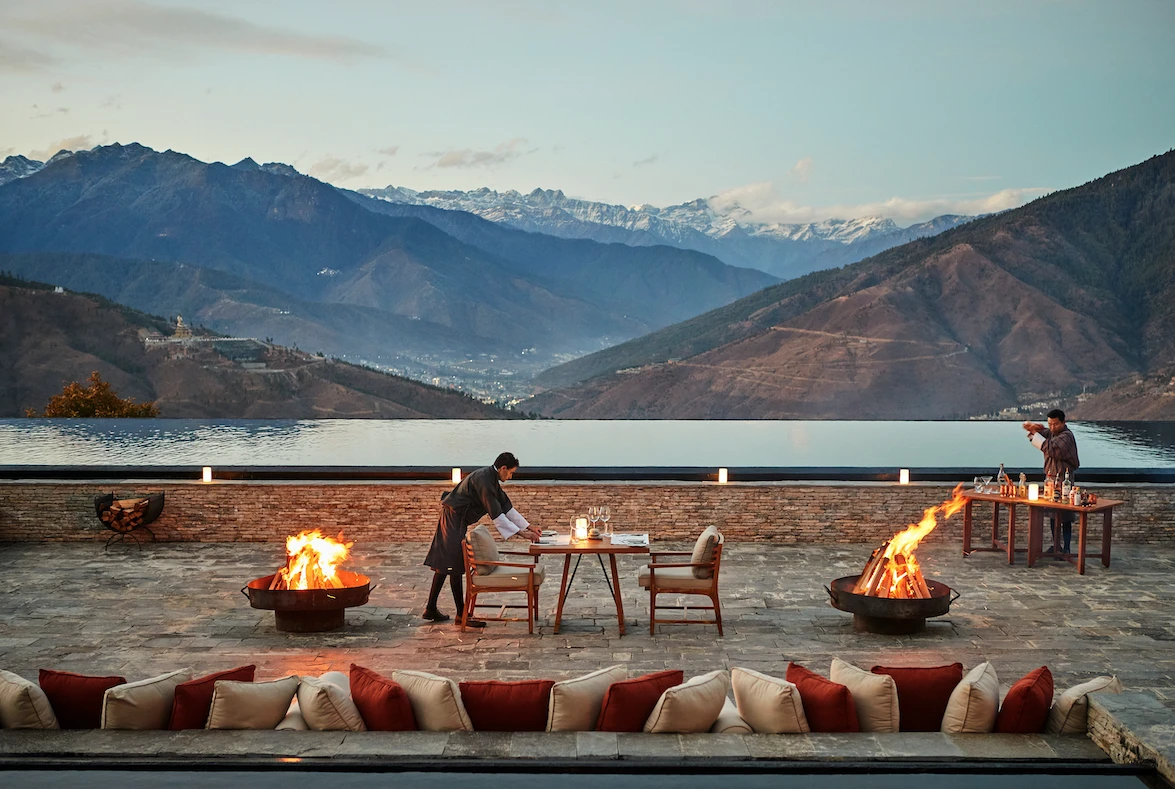
Thimphu is the largest of Six Senses’ Bhutan properties with 20 suites and five villas. Designed by Bangkok-based Habita Architects, all the building exteriors draw from traditional Bhutanese farmhouses. Roofs are corrugated zinc with stones placed on top
to weigh down each sheet while the walls are made of rammed earth with timber trimmings. Inside, windows stretch fully across each suite, allowing for a near-uninterrupted panorama of the mountains that make up Thimphu Valley. Wooden beams line the walls, ceiling and floors, stretching from the traditional bukhari fireplace that sits on one end to the bathrooms on the other. The one wall that isn’t covered in wooden beams is painted with swirls of wind and cloud. There’s also a balcony with every suite and Bhutanese booties are placed at the door for guests to combat the chilly weather. One detail – less conspicuous – is the wooden yaks at the door, which replace the more typical do-not-disturb signs of other hotels.
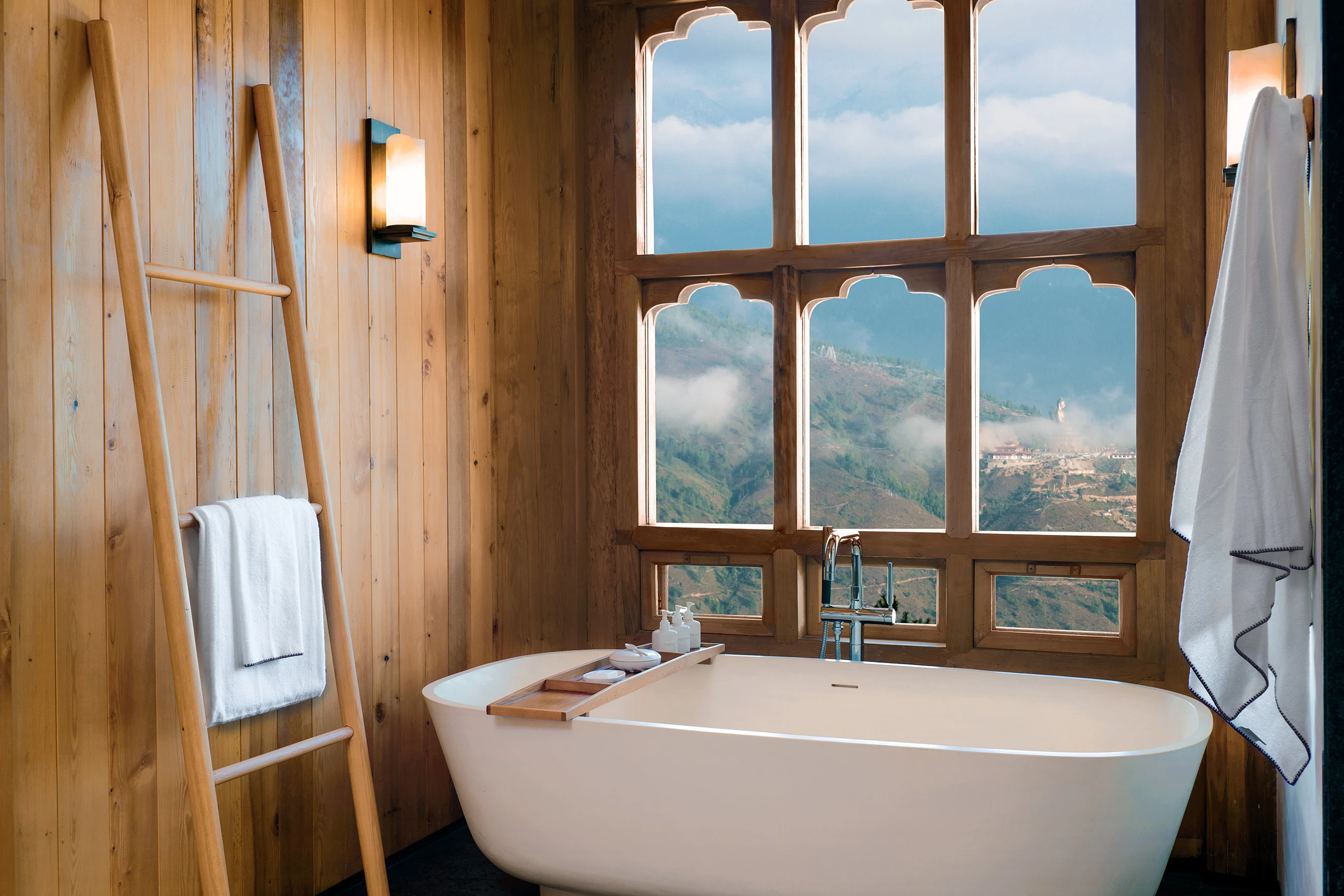
Being cocooned in the suite with its heated floors and soft furnishings is just about what anybody wants to do. There’s local fruit – it’s orange season when I’m there. Waters of different fruit and herb mixtures are placed in the room, ready for sipping while nibbling on welcome treats and reading one of the provided books. But one would be remiss to do only that, because the activity programming is varied and designed to immerse guests into Bhutanese culture.
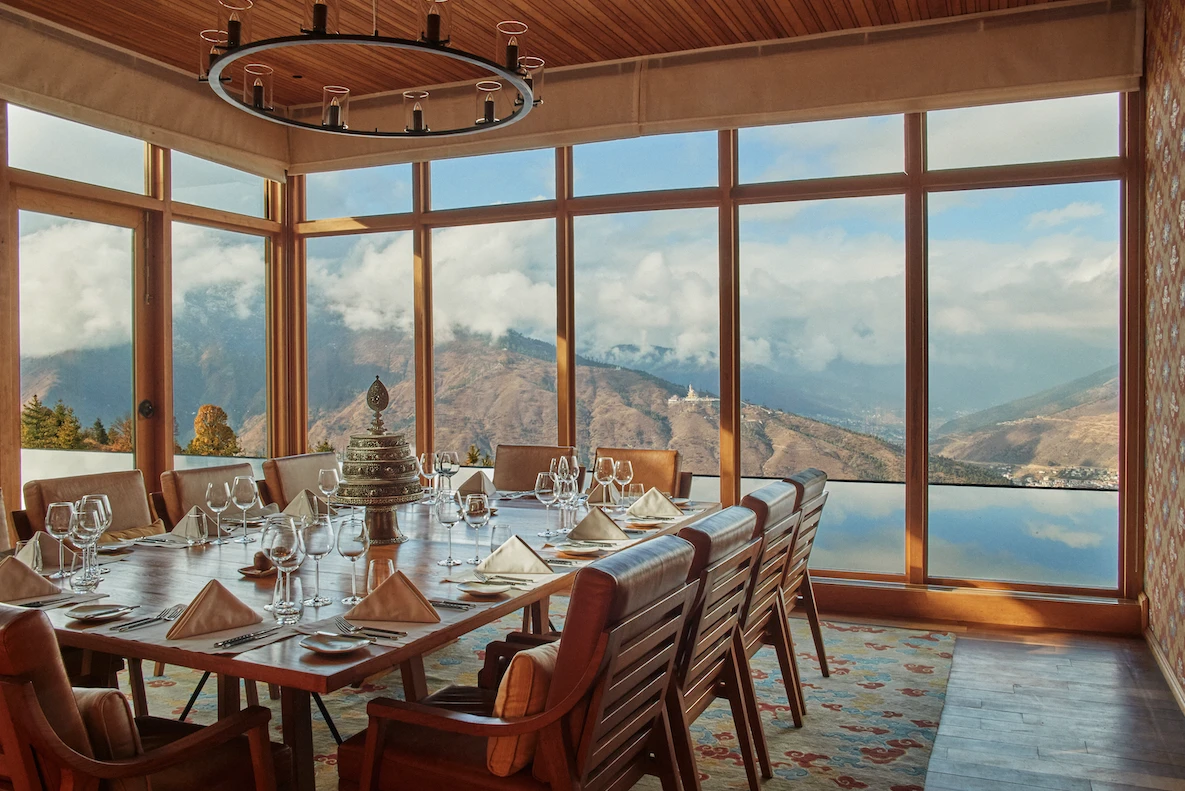
There’s astrology reading at the monastic school in town, a guided meditation and tour of the Buddha Dordenma, conversations with lamas, mindfulness sessions in the prayer pavilion, hikes and sunset cocktails. Because clouds are beginning to collect in the sky, we decide on afternoon tea and archery. It’s only a stone’s throw from our lodgings at the grounds, which are sandwiched between the main building and the suites.
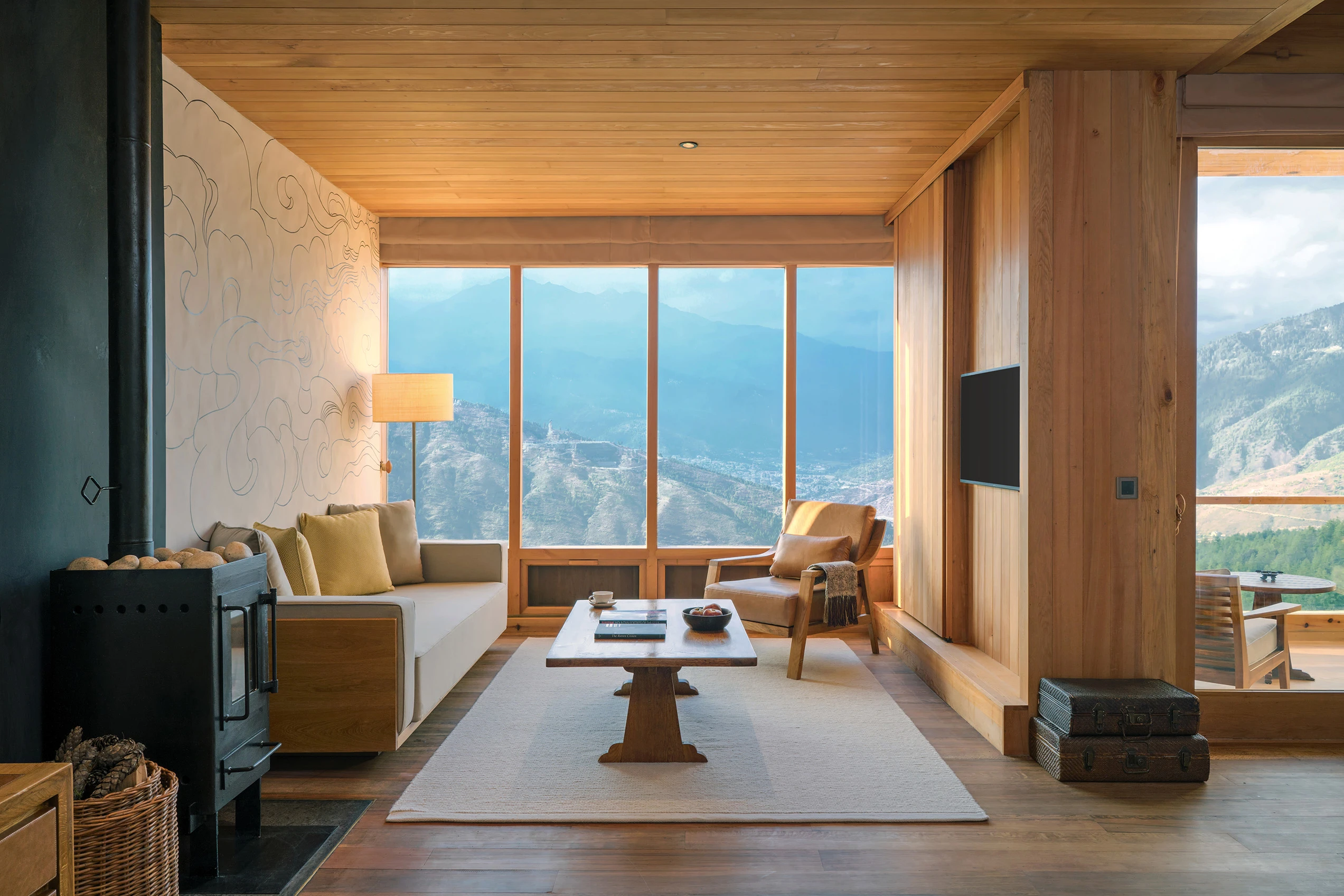
A few surprisingly deft attempts at releasing the arrow from my bow and having it hit relatively close to the mark later, I walk over to a workbench set up outside a small traditional teahouse built on the grounds where a member of the Six Senses team clad in goh, the national dress, is making tsa-tsas – a local votive offering in a cute conical shape with prayers along the rings. We’re each given two to take with us on our travels, one to leave at a holy spot on our journeys through the Himalayan kingdom and the other to bring home with us. I end up placing both at Tiger’s Nest. After sport and craft, we’re led into the teahouse for local butter tea and bites.
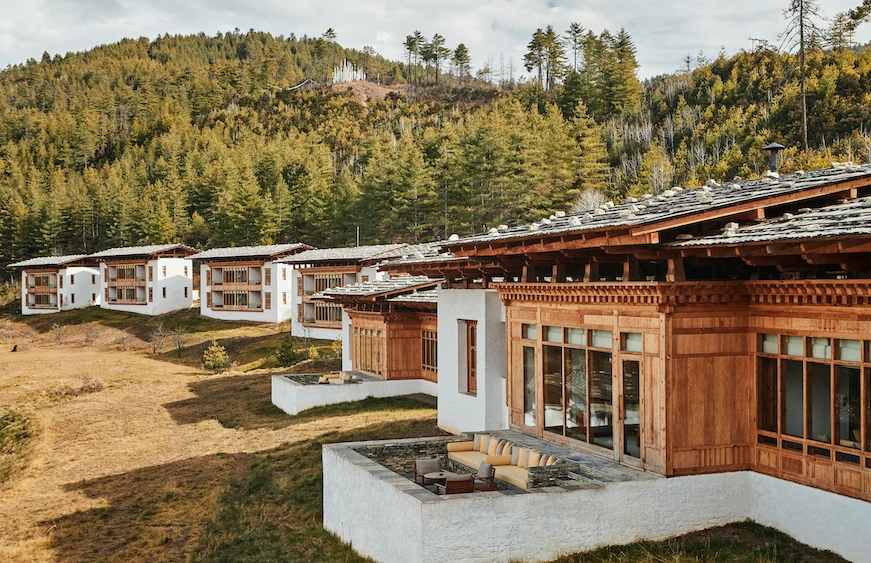
We’re first served the local moonshine ara, a common welcome drink across the country. The alcohol level, we’re told, is anyone’s guess given that it’s homemade – this laid-back approach to liquor and life a tenet of the Bhutanese way of life. A sip of the clear liquid and we determine it to be suitably strong and throw back a few handfuls of puffed rice to line our stomachs. Soon we’re asked if we want to try our hand at churning butter. It’s almost done by the time we start working the dairy and a few churns later, we’re feeling the burn in our arms.
But there are buckwheat pancakes to be had, made from freshly churned butter with chillies or honey followed by traditional butter tea brewed in front of us on top of a traditional Bhutanese farmhouse stove. Butter tea is not really for me but the people in the country consume fats for warmth and chillies are added for extra heat. It’s quite a bit of food, but then our chef brings out an afternoon tea set, inspired by Asian, Western and local cuisine.
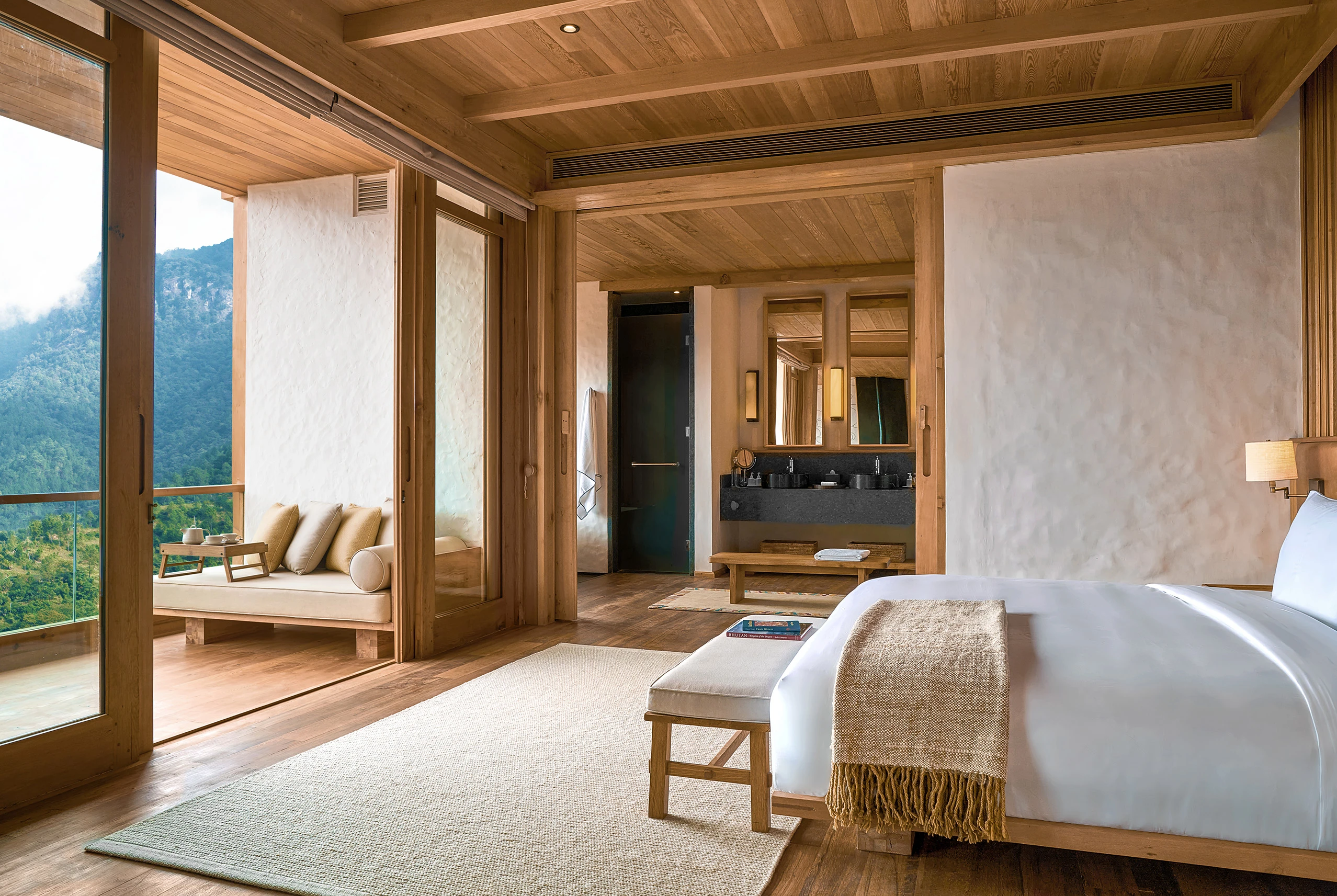
Afterwards, some of us head to the spa to sweat it out while others like me retreat to their room for a crackling fire, a ginger cordial and a hot bath. The soaps carry the same woodsy, slightly herbal aromas that float through the mountain air. And if that wasn’t enough, every night turndown service comes with a hot-water bottle to keep one warm without so much heating.
In the morning, I wake up to a still-warm water bottle and make my way to the meditation chapel. Sunlight floods in as I sit under carved wooden ceilings and a scroll of the seated Buddha. I enjoy a few moments of stillness before heading into the breakfast room for hot fish broth and cheese and eggs in preparation for a full day in the capital. But as we walk through the main doors and out to the gates, there’s a little feeling that we might just want to stay sequestered in this pocket of Himalayan heaven.
Also see: Finding happiness in Bhutan, the Kingdom of the Thunder Dragon




